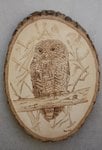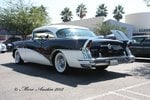- Thread starter
- #1,141
Navigation
Install the app
How to install the app on iOS
Follow along with the video below to see how to install our site as a web app on your home screen.
Note: This feature may not be available in some browsers.
More options
You are using an out of date browser. It may not display this or other websites correctly.
You should upgrade or use an alternative browser.
You should upgrade or use an alternative browser.
Ontos's Photos
- Thread starter ontos
- Start date
Ad: This forum contains affiliate links to products on Amazon and eBay. More information in Terms and rules
More options
Who Replied?Crimea_River
Marshal
Wow! That looks quite surreal. Good pic.
evangilder
"Shooter"
Cool. I like the line between the dark and light. Cool contrast. 
Aaron Brooks Wolters
Brigadier General


GrauGeist
Generalfeldmarschall zur Luftschiff Abteilung
Excellent shot!! 
Interesting shot!
- Thread starter
- #1,147
ontos
Tech Sergeant
Thanks guys, I still can't figure out what caused the sky to make that separation unless it was the mountains covering part of the Sun 
- Thread starter
- #1,149
ontos
Tech Sergeant
You are welcome Shinpachi, I am glad you liked them 8)
wheelsup_cavu
1st Sergeant
I want to Thank you again for giving me this beautiful wood burning of the the Corsair. 8)Now it's War Bird time, a F4U Corsair aboard the USS Hornet.
I have been told that we have a flyable one at the Valle facility. Hopefully we can get them to bring it to Chino soon.While walking around the bone yard before the Mig-15 flight, I found this new beauty sitting on a trailer. It must be a new addition to the Museum. I didn't know what it was till I went on the net, this is a small wright up on it from Wikipedia.
The HA-200 Saeta (Arrow) was the first Spanish turbojet aircraft. It was designed by Willy Messerschmitt as the earlier piston-powered trainer HA-100 Triana. The HA-200 was a low-winged monoplane of all metal construction, with a tricycle undercarriage. It was powered by two Turboméca Marboré mounted side by-side in the forward fuselage and fed from an intake in the nose, exhausting from nozzles just aft of the wing trailing edge. The crew of two was accommodated in tandem in a pressurized cockpit, the first to be Spanish built and designed.[1]
The prototype first flew on 12 August 1955,[2] and the first production aircraft flew in October 1962. The HA-200A aircraft were delivered to the Spanish Air Force with the designation E.14. A single seat version (the HA-220) for the ground-attack role was developed and delivered to the Spanish Air Force with the designation C.10, first flying on 25 April 1970,[3] remaining in service until the end of 1981.[4]
The aircraft was built in Egypt under license as the Helwan HA-200B Al-Kahira by the Helwan Air Works.
COMBAT HISTORY
In 1970, the HA-200 replaced the aging CASA-built Heinkel He-111s in Esc 462 on the Canary Islands. From there they flew on detachments to Spanish Sahara. Late in 1974, during the Polisario uprisings, the planes flew their first combat missions. Polisario guerillas ambushed a police patrol from higher ground and caves, and held them pinned from their protected positions. Several T-6Ds with machine guns and a couple of UH-1 helicopters strafed the Polisario positions but with little effect. Very soon the first two Saetas arrived with 2.75" FFARs. Diving at a 45 degree angle toward the cave entrances, the stability of the HA-200 design proved itself without a doubt, as the rockets were observed flying straight into the caves. Following the initial rocket attacks, ground troops attempted to take the caves, but were pushed back.
The next morning, the Saetas arrived once more, in the company of more T-6s and UH-1 troop carriers. The attack pattern from the previous day proved itself once more, with a FAC ordering fire where it would be most useful. Rocket after rocket entered the caves through the 5-10 foot entrances, with very few missing their target. It seems one of the rockets set off some mortar rounds, as there were several very large explosions. Soon, ground troops once again attempted to take the caves, but this time there was hardly any resistance. Most of the guerillas had been killed by the accurate rocket fire delivered by the Saetas.
That is awesome.Thanks Gnomey, greatly appreciated. Here is a burn I just finished I hope you like it, my wife saw this picture and said I should try it.
King Tut never looked better.
Bob showed it to me after you left. The picture of it is nice but it looks better in person.YP-59 AIRACOMET
Several awesome looking cars in your photos. You captured them well.Thanks Gnomey, Here are some shots taken at a car show put on by "Emeritus at Vi;;a de Anza" in Jurupa Valley, the show for for a cure for Alzheimer's. They had three times as many as last year and some real beauties.
That is a neat effect.Grabbed this shot of a sunrise a couple of weeks ago, I just thought it looked , well different 8)

Wheels
- Thread starter
- #1,151
ontos
Tech Sergeant
Thanks Wheels for the information on the HA-200, it would be great to see one fly, I hope they can get one at Chino.
Thank you for the more than kind words on the burns and pictures, I could not make it to the discussion Saturday it was my daughters and Mother-in-laws birthdays. I will be at the next one
Thank you for the more than kind words on the burns and pictures, I could not make it to the discussion Saturday it was my daughters and Mother-in-laws birthdays. I will be at the next one
- Thread starter
- #1,152
ontos
Tech Sergeant
evangilder
"Shooter"
Nice one, Merv! 
Good work Merv!
Aaron Brooks Wolters
Brigadier General
You da man Merv!!!!!!!!!!! SPOT ON SIR! 






- Thread starter
- #1,156
ontos
Tech Sergeant
Thanks Eric, Gnomey and Aaron for your kind comments, I seem to learn more with each burn, the hard thing is patience and try not to hurry.
GrauGeist
Generalfeldmarschall zur Luftschiff Abteilung
Holy Smokes, Merv...you absolutely rocked that Owl!!
Well done, my friend!
Well done, my friend!
- Thread starter
- #1,158
ontos
Tech Sergeant
Thanks Dave, greatly appreciated 
- Thread starter
- #1,159
ontos
Tech Sergeant
evangilder
"Shooter"
Nice! 
Users who are viewing this thread
Total: 1 (members: 0, guests: 1)




